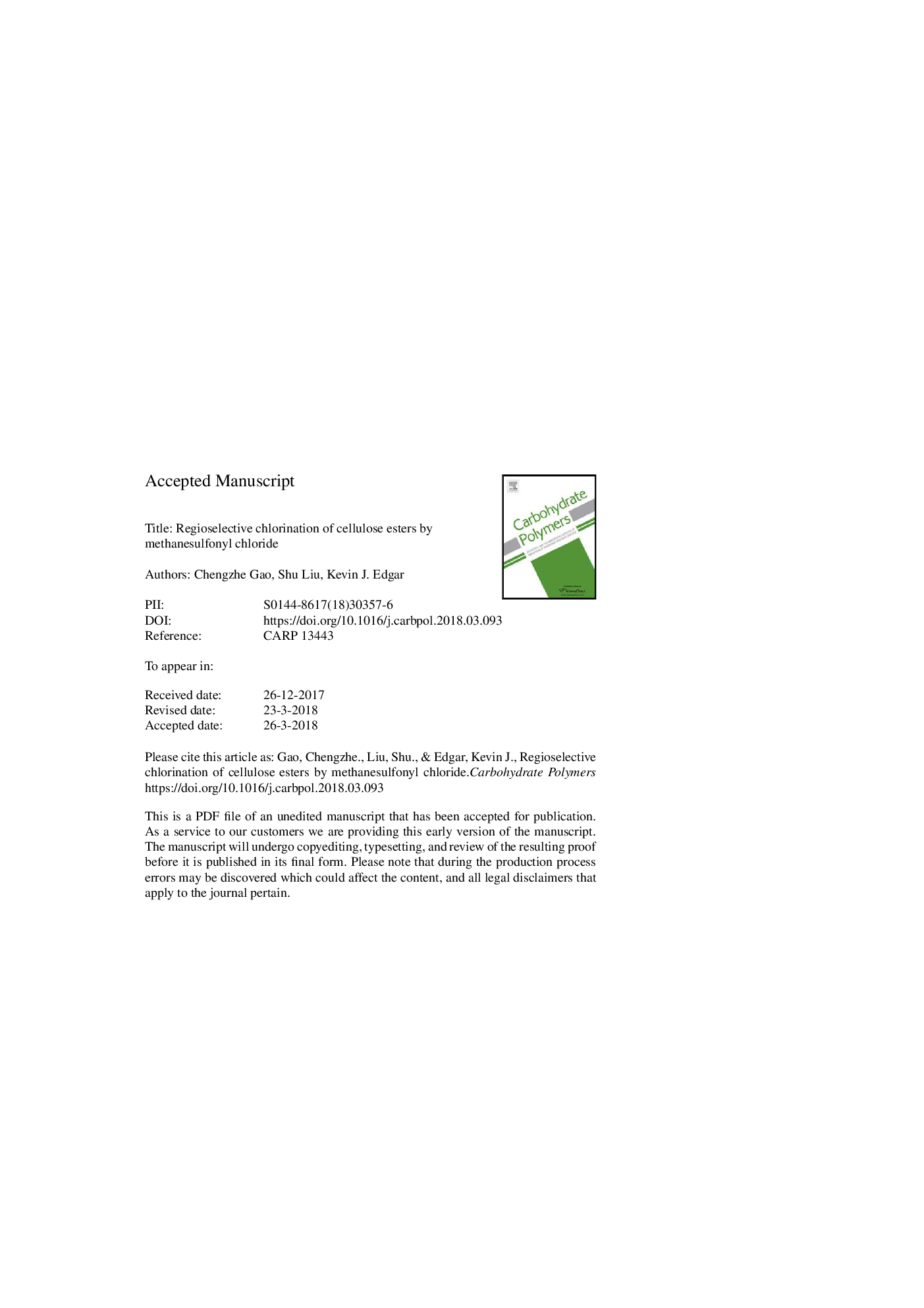| Article ID | Journal | Published Year | Pages | File Type |
|---|---|---|---|---|
| 7782540 | Carbohydrate Polymers | 2018 | 42 Pages |
Abstract
Regioselective chlorination of cellulose is challenging due to its low reactivity, the small reactivity differences between cellulosic hydroxyl groups, and the high and diverse reactivity of most common chlorinating agents. Halogenation of cellulose affords useful precursors for subsequent nucleophilic substitution reactions, permitting incorporation of new functionality. Herein we report a simple and efficient pathway for preparation of 6-chloro-6-deoxycellulose esters and their derivatives. Cellulose acetate (degree of substitution (DS) 1.75, CA320S) can be chlorinated by essentially quantitative reaction of the primary alcohol groups with methanesulfonyl chloride (MsCl), yielding 6-chloro-6-deoxy cellulose acetate. Characterization methods including 1H NMR, 13C NMR, FT-IR spectroscopy, and elemental analysis, demonstrated chemo- and regioselective C-6 chlorination. We also demonstrate that chlorinated cellulose acetate is a useful intermediate for displacement reactions with nucleophiles including sodium azide, amines, and thiols to prepare functional cellulose ester derivatives.
Keywords
Related Topics
Physical Sciences and Engineering
Chemistry
Organic Chemistry
Authors
Chengzhe Gao, Shu Liu, Kevin J. Edgar,
